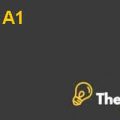
Classic Fixtures & Hardware Company Case Solution
Introduction;
The classic fixtures and hardware company is a nationally well-known manufacturer of the kitchen and bathroom fixtures along with lock sets and hardware for windows and doors. The company is privately held and has limited access to capital, therefore, the company has issued the loan in order to fulfill the needs from Southwest National bank.
Along with this, it is observed that level productivity and systematic sales would result in higher inventory levels, credit would balance in the first portion of the year, the inventory level would decline as well as declining inventory levels the credit would balance by 50% during half the year. In 2008, Classic's credit balances were developed in estimated amounts, and its CFO trusted that the company would be not able to pay the outstanding loan amount before the end of the year.
Therefore, the objective of the case is to determine the sales level that would enable to meet the debt of the company, as well as it would be able to determine as to why the sales are decreasing in forecasted data, and lastly, it would determine whether the company would be able to pay the loan before the end of the year.
Issues identified:
There are numerous issues identified in the company’s financial information, such as the company’s seasonal loan capability is significantly higher than forecasted with in the first half of forecasted period of the year 2008. It is observed that the weather has a severe impact on the sales of the company, as the company generates more sales during spring and less in the time of winter. Therefore, this pattern of sales resulted in high level of inventories and loan for working capital in the first half of the year as well as it led to the decline in the stock and advanced parities in the second half of the year. The company’s loan outstanding by the end of March, 2008 was $4 million which was more than forecasted . The lead bank suspected that the company was utilizing short term loan facility for long term capital projects. Furthermore, the deals during the first half of 2008 neglected to meet the forecast and cash receipts were insufficient to pay short term loan facility due to the constant increase in the account receivables.
Application of theory
Financial Analysis:
The analysis is used based on the ratios and compared with two years, which are 2007 and 2008. In order to determine the sales forecast that do not meet the debt obligations due to decrease in sales, it has been analyzed that the sales decreased to 4% in 2008 as compared to the previous year. The probable reasons for the decline in sales would be;
Reasons for declining in sales to meet the obligation:
The first and foremost reason for the declining sales is the unrealistic forecasting, as if the company uses historic data for generalizing the sales on monthly basis, then it would be solely based on assumptions. The company requires using the data analytics and other reliability factors which would help the company to meet its goal or to pay off the debt. Other reasons include;
- The competitors have made special drivers for the decline in sales by adding more features in the offerings and providing high quality services at low price.
- Products are becoming obsolete
- Poor performance of the sales representatives
- Clients might not be satisfied with the quality (excessively numerous defective products), delivery (late, or not in the right amounts) or service.
- Regularly when manufacturing companies like this make a gamut of different items, then in such a case only 10 % of them are offered and tend to provide benefits. On the other hand, the other 90%generate less benefit and sometimes tend to make losses.
Ratio analysis:
The ratios below show the company’s performance in generating sales and eradicating the profit from the assets or capital structure. The comparison is made in between 2007 and 2008......................
This is just a sample partial case solution. Please place the order on the website to order your own originally done case solution.












